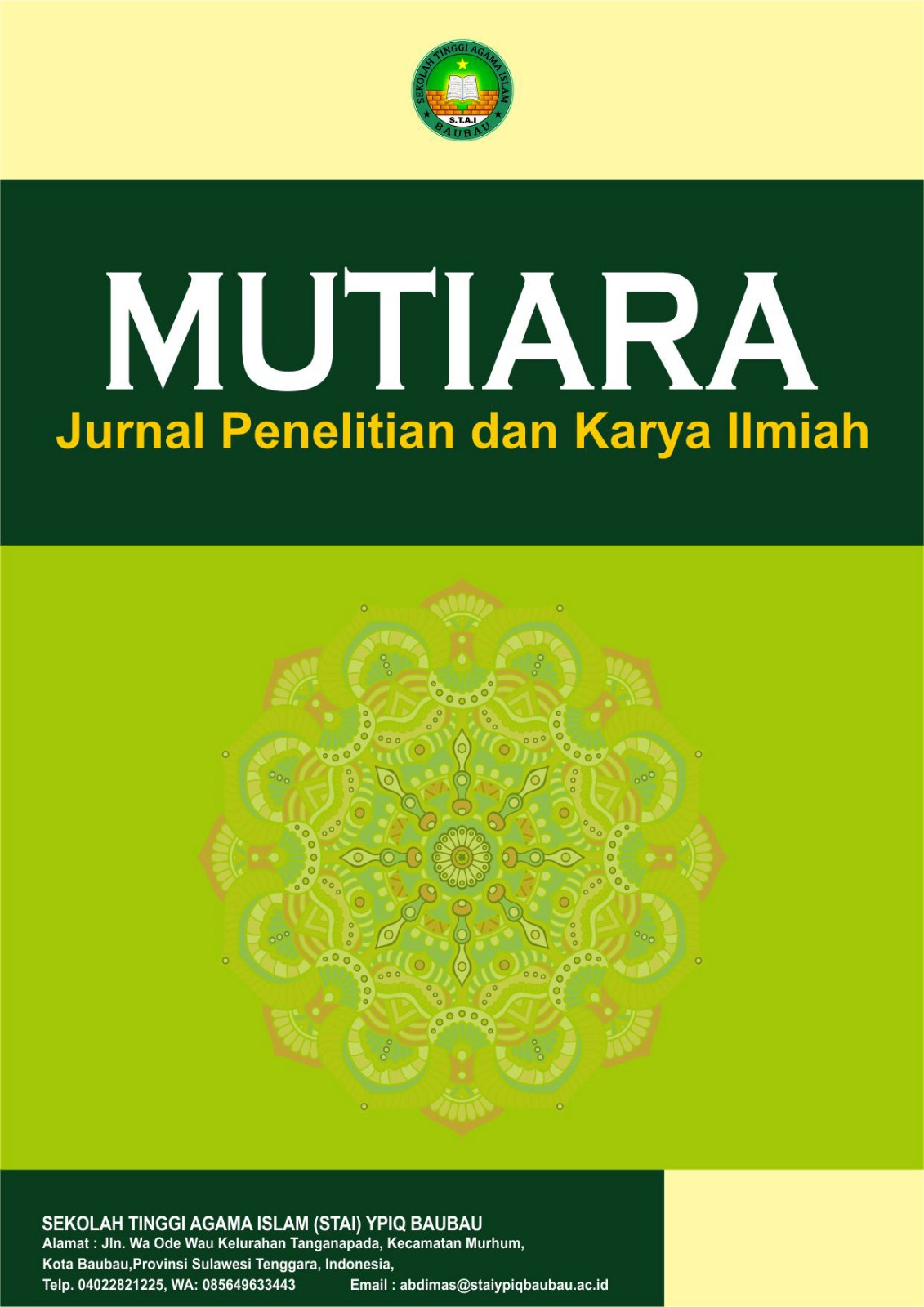Identifikasi Tercampurnya Minyak Lumas dengan Air pada Carter Cargo Oil Pump Turbine di MT. Nectar
DOI:
https://doi.org/10.59059/mutiara.v3i4.2687Keywords:
Fishbone Diagram, Labyrinth Seal, Lubricating Oil, SHEL MethodAbstract
This study examines a crucial problem that occurred on board the MT. Nectar, namely air contamination in the lubricating oil of the Cargo Oil Pump Turbine COPT, which is a critical system in supporting the download and unloading process of crude oil. This contamination resulted in a significant decrease in pump performance, increasing the risk of malfunction that impacts equipment safety and the operational efficiency of the ship. This problem not only has a technical impact, but also requires proper maintenance management handling. Using a qualitative approach through direct observation, interviews with crew members, and documentation studies of the maintenance and operation history of the lubrication system, this study analyzed the root cause using the SHEL (Software, Hardware, Environment, Liveware) model and Fishbone Diagram. The analysis results indicate that the main causes of contamination are leaks in the labyrinth seal, inadequate condenser vacuum, and wear on metal bearings due to suboptimal lubrication. To address this problem, the study recommends improving compliance with Plan Maintenance System PMS procedures, implementing routine and periodic inspections of the entire lubrication system, using high-quality components, and improving technical training for crew members to strengthen their understanding of the lubrication system. In addition, a digital monitoring system is needed for early detection of contaminants in the oil. These steps aim to maintain the darkness and efficiency of the COPT system to ensure optimal ship operations. This research is expected to be a useful reference for ship crews, shipping companies, and cadets at the Semarang Maritime Polytechnic PIP in understanding the importance of lubrication systems and preventing contamination in auxiliary machinery on ships. This research is expected to be a useful reference for ship crews, shipping companies, and cadets at the Semarang Maritime Polytechnic PIP in understanding the importance of lubrication systems.
References
Ahn, S., Seo, J. M., & Lee, H. (2021). Thermogravimetric analysis of marine gas oil in lubricating oil. Journal of Marine Science and Engineering, 9(3), 339. https://doi.org/10.3390/jmse9030339
Aji, W. P. (2021). Analisa penyebab rusaknya cargo oil pump guna menunjang discharge cargo Pertamina di atas kapal MT. Patra Tanker 2 [Skripsi, Politeknik Ilmu Pelayaran Semarang]. https://repository.pip-semarang.ac.id/
Applied Sciences Editorial Office. (2025). Reliability assessment of ship lubricating oil systems through improved dynamic Bayesian networks and multi-source data fusion. Applied Sciences, 15(10), 5310. https://doi.org/10.3390/app15105310
Banaszek, A., & Urbanski, T. (2020). The flow calculation algorithm of submerged hydraulic cargo pumps working with reduced pump speed on modern product and chemical tankers. Applied Sciences. [Informasi volume dan halaman tidak tersedia]
Durán, A. L., Franco, E. E., Reyna, C. A. B., Pérez, N., Tsuzuki, M. S. G., & Buiochi, F. (2021). Water content monitoring in water-in-crude-oil emulsions using an ultrasonic multiple-backscattering sensor. Sensors, 21(15), 5088. https://doi.org/10.3390/s21155088
Hendrawan, A., Dwiono, A. S., & Pramono, S. (2022). Perilaku temperatur minyak lumas pada kapal. Dinamika Bahari. [Informasi volume dan halaman tidak tersedia]
Kamiński, P. (2024). Investigation lubricity performance of lubricating oil used in marine diesel engine—Fuel injection pump. Applied Sciences, 14(14), 6148. https://doi.org/10.3390/app14146148
Konur, O., Saatcioglu, Y. O., Korkmaz, S. A., Colpan, C. O., Yuksel, O., & Muslu, I. (2022). Perancangan dan analisis termal sistem siklus Rankine organik yang memanfaatkan panas buang turbin pompa oli kargo dan mesin induk di kapal tanker besar. Jurnal Produksi Bersih, 368, 133230. https://doi.org/10.1016/j.jclepro.2022.133230
Kusumadewi, A., Abadi, C. S., & Syuriadi, A. (2022). Analisa pengaruh kerusakan bearing terhadap performa pompa diesel fire fighting PT PJB UP Muara Tawar. Jurnal Prosiding Semnas Mesin PNJ, 753–761.
Mustofa, A. N. (2023). Gagalnya kenaikan RPM pada cargo oil pump turbine berpengaruh terhadap terhambatnya proses bongkar muatan di MT. Sanana [Skripsi, Politeknik Ilmu Pelayaran Semarang]. https://repository.pip-semarang.ac.id/
Narto, A., & Mungin, E. W. J. S. E. V. (2023). Mesin penggerak utama turbin uap dan turbin gas. Jakarta: Penerbit Adab.
Nishi, Y., & Itoh, N. (2025). Internal flow and hydraulic loss of a reverse-running pump turbine with a single blade. International Journal of Heat and Fluid Flow, 116, 109964. https://doi.org/10.1016/j.ijheatfluidflow.2025.109964
Omar, A. S. A., Salehi, F. M., Farooq, U., & Morina, A. (2024). Additives depletion by water contamination and its influences on engine oil performance. Tribology Letters, 72(3), Article 74. https://doi.org/10.1007/s11249-024-01876-y
Pratama, N. T. (2022). Optimalisasi kerja cargo oil pump turbine di MT. Nusa Merdeka [Skripsi, Politeknik Ilmu Pelayaran Semarang]. https://repository.pip-semarang.ac.id/
Ravendran, R., Jensen, P., de Claville Christiansen, J., Endelt, B., & Appel Jensen, E. (2017). Rheological behaviour of lubrication oils used in two-stroke marine engines. Industrial Lubrication and Tribology, 69(5), 750–753. https://doi.org/10.1108/ILT-03-2016-0075
Seventen, D. A. (2020). Analisa penurunan kerja cargo oil pump turbine di MT. Gede [Skripsi, Politeknik Ilmu Pelayaran Semarang]. https://repository.pip-semarang.ac.id/
Sugiyono. (2019). Metode penelitian kuantitatif, kualitatif, dan R&D. Bandung: Alfabeta.
Truijen, D. P. K., Hoffstaedt, J., Schürenkamp, D., Ansorena Ruiz, R., & De Kooning, J. D. M. (2025). Dynamic power response shaping using adaptive torque constraints in counter-rotating pump-turbine feedback control. Energy, 331, 136753. https://doi.org/10.1016/j.energy.2025.136753
Wodtke, M., Frost, J., & Litwin, W. (2025). Effect of water contamination of an environmentally acceptable lubricant based on synthetic esters on the wear and hydrodynamic properties of stern tube bearing. Tribology International, Article 110562. https://doi.org/10.1016/j.triboint.2025.110562
Ye, S., Da, B., Qi, L., Xiao, H., & Li, S. (2023). Condition monitoring of marine diesel lubrication system based on an optimized random singular value decomposition model. Machines, 13(1), 7. https://doi.org/10.3390/machines13010007
Yuksel, O. (2024). Modelling of a cargo oil pump turbine system to find the optimum pump operation capacities through the design of experiments approaches. Ships and Offshore Structures, 15(3). https://doi.org/10.1080/17445302.2024.2336679
Downloads
Published
How to Cite
Issue
Section
License
Copyright (c) 2025 Mutiara : Jurnal Penelitian dan Karya Ilmiah

This work is licensed under a Creative Commons Attribution-ShareAlike 4.0 International License.








